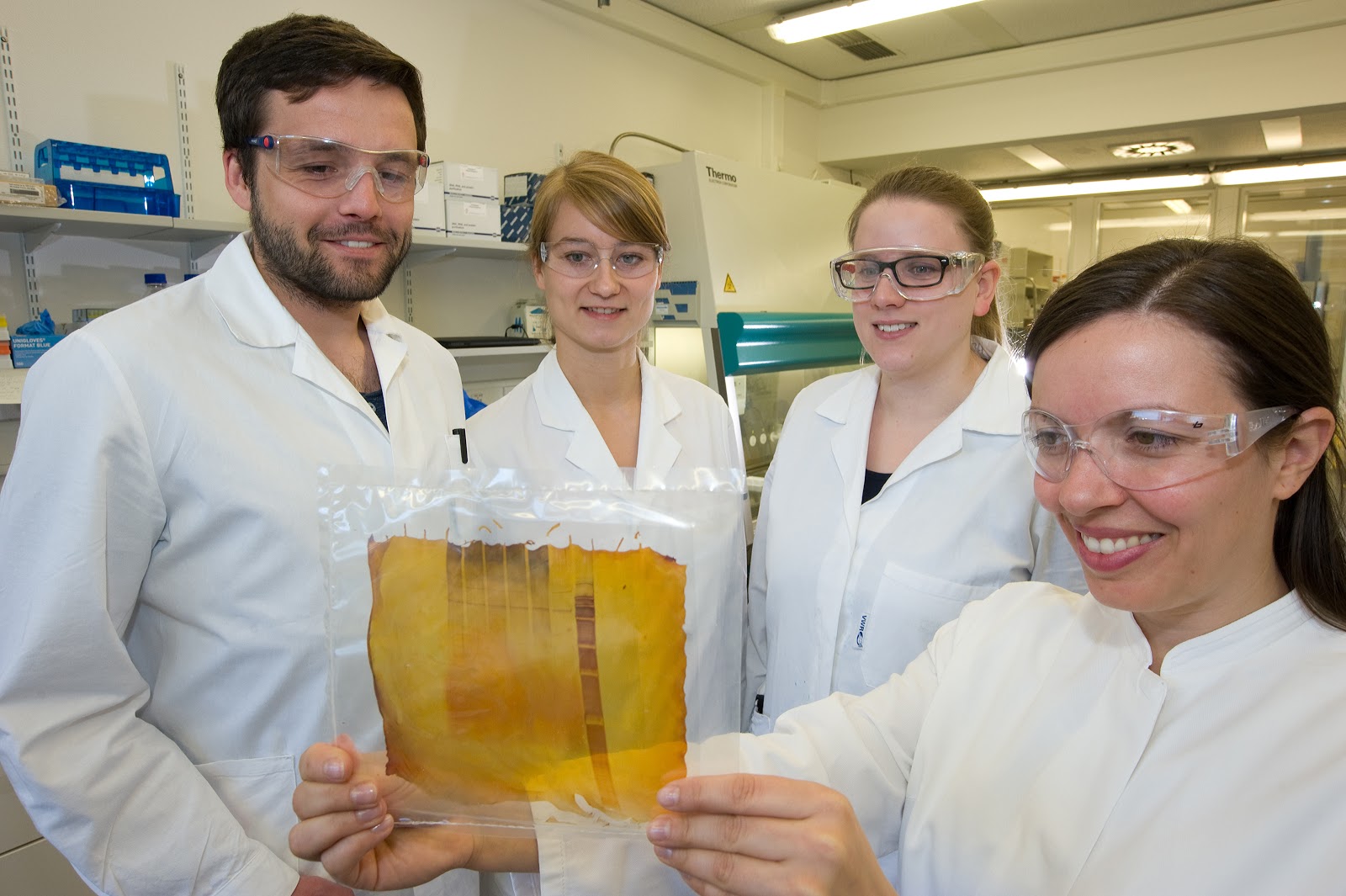With climate change and food-insecurity putting pressure on our agricultural systems, viral disease outbreaks in agriculturally relevant crops can heavily impact food production and natural ecosystems. Through new technology in DNA enzymes, Dr. Ingrid Span is developing tools to fight viruses in plants and minimize food losses. View Halo Profile >>
Tell us about your research
We are studying the structure and function of RNA-cleaving deoxyribozymes, also referred to as DNA enzymes or DNAzymes. These are single stranded, catalytically active DNA sequences which adopt an unusual three-dimensional architecture that enables them to accelerate chemical reactions. RNA-cleaving DNAzymes can reduce the levels of RNA with high specificity, which leads to a great potential in therapeutic applications targeting viral infections in humans and crops. We study the structure and activity of DNAzymes to obtain insights into their mechanism of action. Our goal is to develop DNAzymes that target viral RNA of agriculturally relevant crops and contribute to fight plant diseases.
Our goal is to develop DNAzymes that target viral RNA of agriculturally relevant crops and contribute to fight plant diseases.
Can you explain that to a non-scientist?
The most common role of DNA is the storage and transfer of genetic information. Conversely, proteins are the predominant molecules that perform chemical reactions. DNA molecules prefer a double helical structure. Two decades ago, scientists discovered that small DNA molecules can adopt another arrangement, which enables them to perform chemical reactions. This type of DNA molecule has not been found in living organisms, but they have a great potential for treating viral diseases in humans and crops. We are trying to understand how they function by studying their structure. We also explore their application as treatment for viral diseases in agriculturally relevant crops to help meet the increasing food demands of our population.

Why did you choose this area of research?
As a structural biologist, I have studied structures of biomolecules with exciting functions or biological roles since my PhD days. I was intrigued when I learned about DNA molecules that can adopt a totally different structure than known from naturally occurring DNA, and this new arrangement enables them to function in a completely different way. Obtaining structural insights and understanding the mechanism of DNAzyme-mediated RNA-cleavage motivated me to study these fascinating biocatalysts. Beyond the scientific challenges, I also believe there is an urgent need for developing new technologies for fighting human or plant viral diseases.
How could your Grants4Ag project someday impact #healthforall #hungerfornone?
Viral diseases provide a major challenge to agriculture worldwide. Climate change and human population pressures are driving rapid alterations in agricultural practices and cropping systems that facilitate destructive viral disease outbreaks. These outbreaks are more evident in food-insecure regions and have a dramatic impact for food production and natural ecosystems.
Viral diseases provide a major challenge to agriculture worldwide. Climate change and human population pressures are driving rapid alterations in agricultural practices and cropping systems that facilitate destructive viral disease outbreaks.
Our project will explore the potential of DNAzymes for fighting viral diseases in crops and contribute to minimize losses in food production. This will ultimately lead to more people having access to sufficient and healthy food.
This will ultimately lead to more people having access to sufficient and healthy food.


